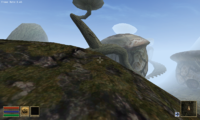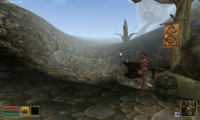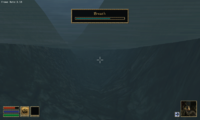=======================================================
glmark2 2017.07
=======================================================
OpenGL Information
GL_VENDOR: ptitSeb
GL_RENDERER: GL4ES wrapper
GL_VERSION: 2.1 gl4es wrapper 1.1.1
=======================================================
[build] use-vbo=false: FPS: 130 FrameTime: 7.692 ms
[build] use-vbo=true: FPS: 133 FrameTime: 7.519 ms
[texture] texture-filter=nearest: FPS: 223 FrameTime: 4.484 ms
[texture] texture-filter=linear: FPS: 207 FrameTime: 4.831 ms
[texture] texture-filter=mipmap: FPS: 202 FrameTime: 4.950 ms
[shading] shading=gouraud: FPS: 76 FrameTime: 13.158 ms
[shading] shading=blinn-phong-inf: FPS: 72 FrameTime: 13.889 ms
[shading] shading=phong: FPS: 54 FrameTime: 18.519 ms
[shading] shading=cel: FPS: 49 FrameTime: 20.408 ms
[bump] bump-render=high-poly: FPS: 27 FrameTime: 37.037 ms
[bump] bump-render=normals: FPS: 137 FrameTime: 7.299 ms
[bump] bump-render=height: FPS: 110 FrameTime: 9.091 ms
[effect2d] kernel=0,1,0;1,-4,1;0,1,0;: FPS: 29 FrameTime: 34.483 ms
[effect2d] kernel=1,1,1,1,1;1,1,1,1,1;1,1,1,1,1;: FPS: 7 FrameTime: 142.857 ms
[pulsar] light=false:quads=5:texture=false: FPS: 172 FrameTime: 5.814 ms
[desktop] blur-radius=5:effect=blur: passes=1:separable=true:windows=4: FPS: 11 FrameTime: 90.909 ms
[desktop] effect=shadow:windows=4: FPS: 50 FrameTime: 20.000 ms
[buffer] columns=200:interleave=false:update-dispersion=0.9:update-fraction=0.5:update-method=map: FPS: 29 FrameTime: 34.483 ms
[buffer] columns=200:interleave=false:update-dispersion=0.9:update-fraction=0.5:update-method=subdata: FPS: 29 FrameTime: 34.483 ms
[buffer] columns=200:interleave=true:update-dispersion=0.9:update-fraction=0.5:update-method=map: FPS: 37 FrameTime: 27.027 ms
[ideas] speed=duration: FPS: 49 FrameTime: 20.408 ms
[jellyfish] <default>: FPS: 27 FrameTime: 37.037 ms
[terrain] <default>: FPS: 1 FrameTime: 1000.000 ms
[shadow] <default>: FPS: 31 FrameTime: 32.258 ms
[refract] <default>: FPS: 5 FrameTime: 200.000 ms
[conditionals] fragment-steps=0:vertex-steps=0: FPS: 197 FrameTime: 5.076 ms
[conditionals] fragment-steps=5:vertex-steps=0: FPS: 77 FrameTime: 12.987 ms
[conditionals] fragment-steps=0:vertex-steps=5: FPS: 191 FrameTime: 5.236 ms
[function] fragment-complexity=low:fragment-steps=5: FPS: 121 FrameTime: 8.264 ms
[function] fragment-complexity=medium:fragment-steps=5: FPS: 59 FrameTime: 16.949 ms
[loop] fragment-loop=false:fragment-steps=5:vertex-steps=5: FPS: 114 FrameTime: 8.772 ms
[loop] fragment-steps=5:fragment-uniform=false:vertex-steps=5: FPS: 81 FrameTime: 12.346 ms
[loop] fragment-steps=5:fragment-uniform=true:vertex-steps=5: FPS: 46 FrameTime: 21.739 ms
=======================================================
glmark2 Score: 84
=======================================================




